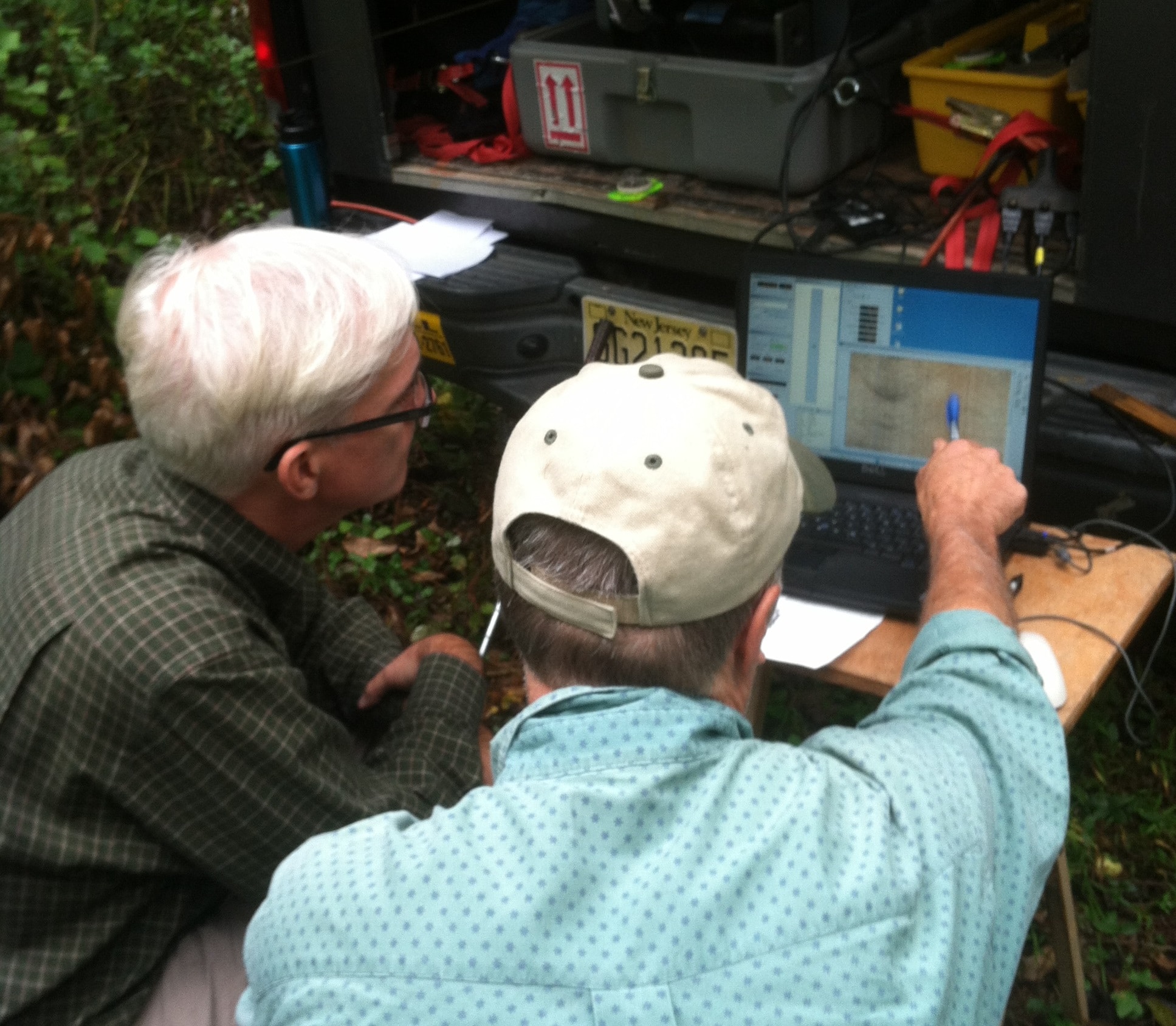
Reflects how close measured values are to the true or accepted reference. Ensured via calibration against certified standards—a central component in laboratory quality assurance practices.
Downhole ultrasonic logging device that creates a 360° oriented acoustic image of the borehole wall using high-frequency sound waves. Fractures appear as sinusoidal features, allowing the log analyst to select, classify and derive their orientation (strike and dip) with high accuracy. ATV can obtain useful data through intervals of turbid water, where OTV would not yield an interpretable record.
Direction-dependent variation in hydraulic properties; for example, vertical conductivity may be far less than horizontal. Often strong in sedimentary and fractured media.
The reversible binding of contaminants to solid surfaces. Influences their mobility and is central to understanding contaminant fate in soils and aquifers.
of, relating to, or resulting from the influence of human beings on nature. (Merriam-Webster)
Occurs when contaminants stored in lower-permeability media (e.g., rock matrix, clays) via matrix diffusion are released again into flowing groundwater after concentrations in permeable zones decline. It acts as a persistent secondary source, often sustaining contamination long after cleanup efforts at the original discharge areas have been completed.
Upper layer of bedrock affected by weathering, creating increased porosity and serving as a transition zone between soil and rock.
Microbial-mediated contaminant breakdown under aerobic or anaerobic conditions. Impacts mass removal and transforms contaminants into (often) less harmful products.
Methods for making continuous or point measurements down a borehole or well, using a series of probes (a.k.a., “sondes”) and electrically transmitting data to the surface, where recorded as a function of depth. The measurements are related to the physical and chemical properties of the soils and rocks surrounding the borehole and the fluid in the borehole, to the construction of the well, or to some combination of these factors. (Keys, 1997)
Adjustment of instruments to standards, ensuring accurate hydrogeologic and chemical measurements. Integral to QA/QC programs under NJDEP and ITRC.
Process documenting sample handling from field to laboratory, safeguarding data integrity. Required by regulatory bodies like NJDEP and USEPA.
Subset of VOCs with chlorine atoms, typically denser than water. Common chlorinated solvents (PCE, TCE, DCE) are persistent DNAPLs, often subject to aerobic or anaerobic degradation in situ.
Constructed using concentric tubing channels installed in a single borehole, allowing separate sampling from multiple depths post-grouting. CMT wells are relatively low cost and useful in complex hydrostratigraphic settings.
A remedial action for groundwater that relies upon biodegradation processes taking place naturally within the groundwater to achieve specified remedial objectives, wherein those processes are accelerated by introduction of remedial amendments into the subsurface.
New Jersey’s Industrial Site Recovery Act (described here) is a law which, along with its predecessor, the Environmental Cleanup Responsibility Act of 1983, insured that risks to human health and the environment associated with legacy discharges at industrial sites are investigated and remediated when industrial operations cease or when industrial property is sold or transferred.
A remedial action, usually for groundwater, that relies exclusively upon ambient, naturally occurring processes to achieve specified remedial objectives, coupled with a monitoring program to confirm and document ongoing effectiveness. Natural attenuation processes take place to some extent at many (perhaps most) sites and for many contaminants. As with any other approach, a decision to apply MNA as a remedy is based upon a completed Remedial Investigation and potentially other (pre-design) studies, which support a conclusion that MNA can be relied upon to achieve remedial objectives.
The first evaluative stage of study conducted as part of the remediation of a site requiring a site-wide evaluation in New Jersey. The PA consists of historical ownership and operations review, interviews, records search, and site inspection aimed at identifying Areas of Concern for which follow-up evaluation and/or sampling are required to assess potential for past Discharges. Such follow-up evaluation and/or sampling takes place during a subsequent stage of remediation known as a Site Investigation.
A planned series of tasks, typically including inspections, sampling, and analysis, that is intended to evaluate, confirm the effectiveness of, or identify the need for modification of a remedial action.
A study stage of RCRA Corrective Action during which evaluations are made, usually including sampling and analysis, to determine whether discharges have taken place at a facility.
An investigation at a site where a discharge has been documented, intended to gather information needed to evaluate remediation alternatives and to support design of a selected remedy. A key component of the RI is defining the Nature and Extent of Contamination. Other important items developed during the RI include understanding of the geologic and hydrogeologic setting, fate and transport of the discharged contaminants, presence of and proximity to any human or ecological Receptors and (in some regulatory contexts), engineering or other design parameters necessary to select and plan a remedial action.
Cylindrical sample of consolidated geologic material, extracted from the sub-surface using drill-rig deployed coring device. Inspected at the time of acquisition to identify rock and aquifer matrix conditions, including fracture patterns. Increasingly, rock cores are collected and sub-sampled to provide material for laboratory analyses to quantify physical and geochemical characteristics and to measure contaminant concentrations in support of contaminant back-diffusion studies.
Cylindrical sample of unconsolidated geologic material, extracted from the sub-surface using a manual or drill-rig deployed coring device. Inspected at the time of acquisition to identify soil and aquifer matrix physical conditions and sub-sampled to provide material for laboratory analyses to quantify physical and geochemical characteristics and to measure contaminant concentrations.